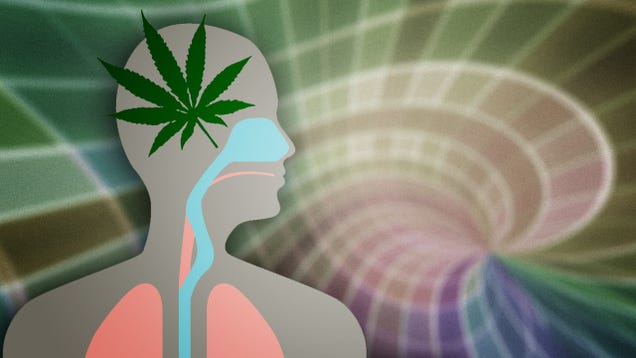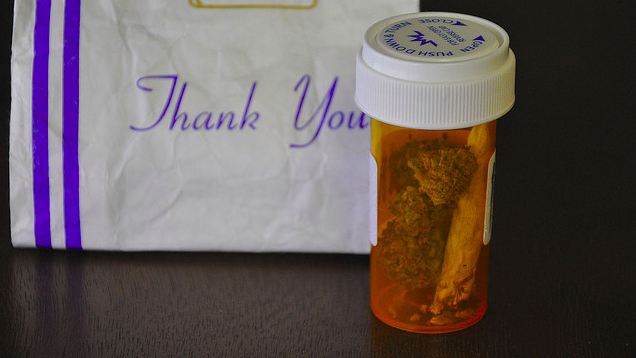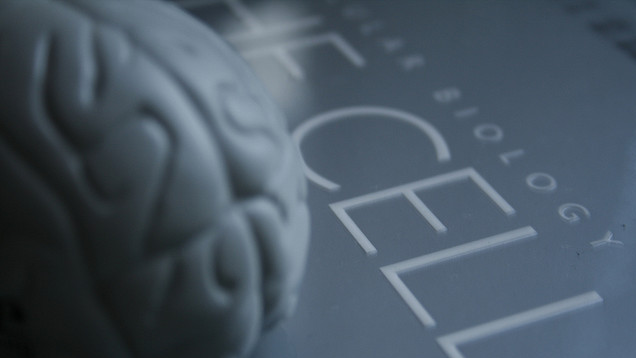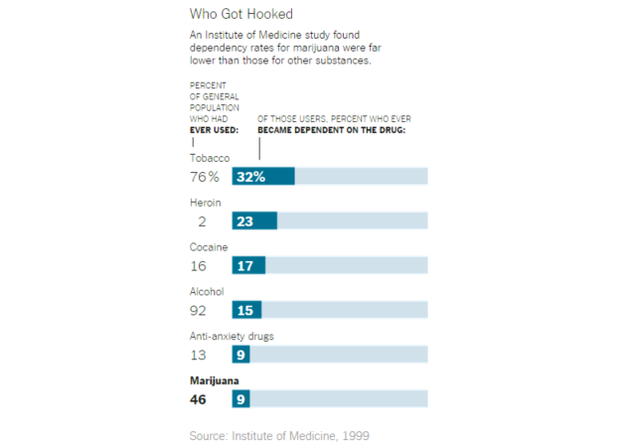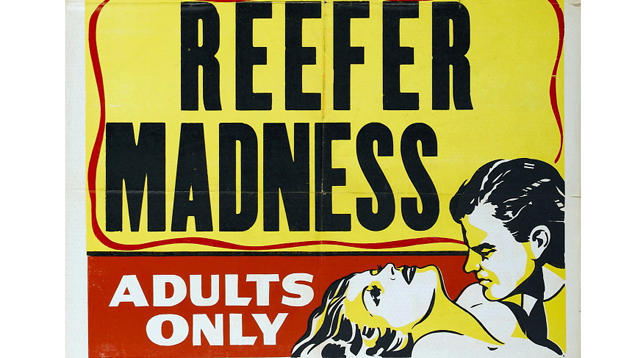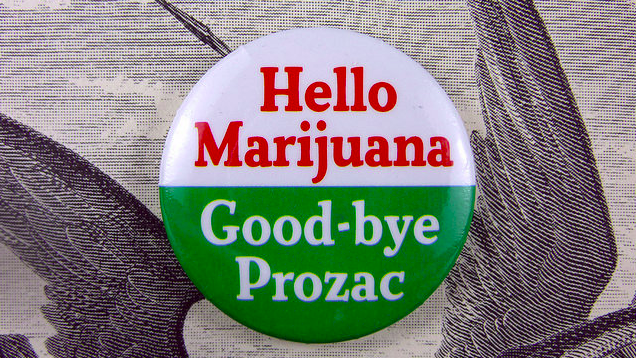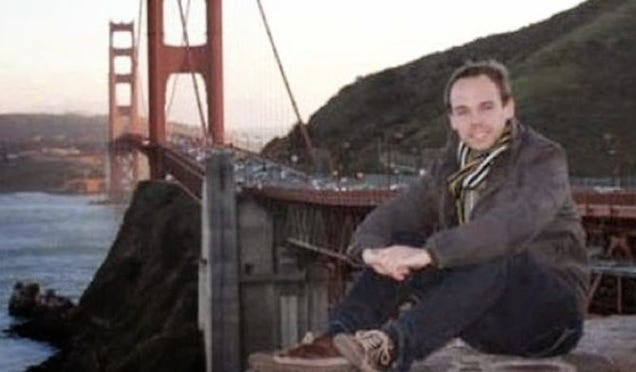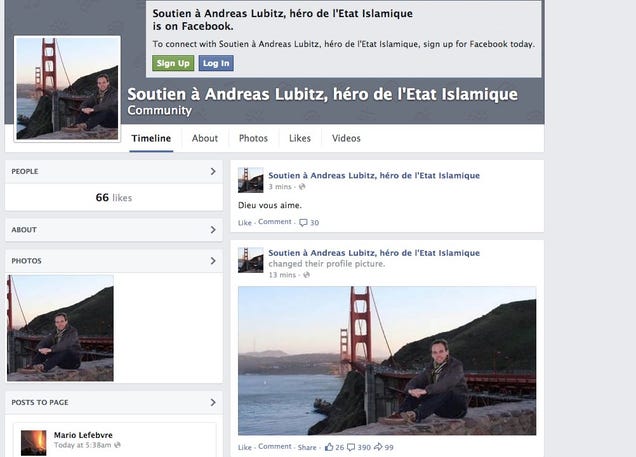
Beyoncé's 2011 pregnancy was more than just the buildup to the birth of Blue Ivy—it was also a gestation period for crazed baby-conspiracy theorists. Why did one of the world's foremost experts in self-promotion release only a few arty pictures of her stomach to document the pregnancy? How did she manage to give birth in a Manhattan hospital without any information about the event itself leaking from a third party? And what was with her stomach collapsing during that one TV appearance? All good mysteries, easily solved by the chaise-lounge conspiracy theorist: Duh. Beyoncé was never pregnant.
The No, No, No Baby Theory essentially boils down to three pieces of evidence: 1) the shifting stomach 2) the shifting due date and 3) the dearth of pregnancy photos.
Why would Beyoncé fake a pregnancy? Most theorists point to vanity or possible fertility problems. (She has previously spoken candidly about a prior pregnancy that ended in a miscarriage, and addressed the subject in songs.)
Some say the image-conscious power-wife opted to raise Jay Z's illegitimate child (the product of an extramarital affair with an unknown woman) as her own, rather than get divorced. Others argue (outlandishly, given her appearance) that Blue Ivy is neither Beyoncé's daughter, nor Jay Z's, but rather the offspring of Beyoncé's philandering father, Matthew Knowles, secretly adopted by the Carters.
No matter which school of thought you subscribe to, most conspiracy theorists agree the pregnancé conspiracé officially began on August 28, 2011 when Bey attended the VMA's dressed in a loose orange gown, cradling what appeared to be a pregnancy bump. She ended her performance that evening by unbuttoning her jacket and rubbing her visibly rounded stomach, as a camera cut to Jay Z receiving congratulations from a jubilant Kanye West.
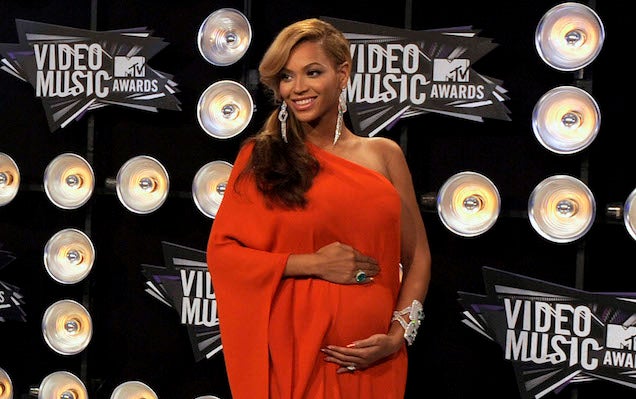
Image via AP
"I put a lot of thought into how I wanted to unveil it. It was important to me that I was able to do it myself," Beyoncé told reporters at the time.
An impeccably planned announcement, as befitting the notoriously detail-oriented performer. But almost immediately, Beyoncé began contradicting herself with statements about the pregnancy's progress. She claimed, in a September interview, that her due date was in February, which would make her four months pregnant at the VMAs. But at a video shoot for "Countdown" that same month, she said she was six months along, making her five months pregnant at the VMAs—the right timing for Blue Ivy's January 7 birthdate.
So she was trying to fake out the press, the reasonable fan says. What else you got?
A pregnant stomach, which Beyoncé seemed to have only occasionally. Despite sporting a substantial bump at the VMA's, there's no hint of it in the music video for Party, reportedly shot earlier that month.
That's easy to explain: Maybe they bound her up and Photoshopped her a little.
But a week after the VMA's, she allowed herself to be photographed wearing a bikini in Croatia with Jay-Z. The bump she was sporting looked significantly smaller than it had at the awards show. I could do that, whispers the burrito-eating theorist.
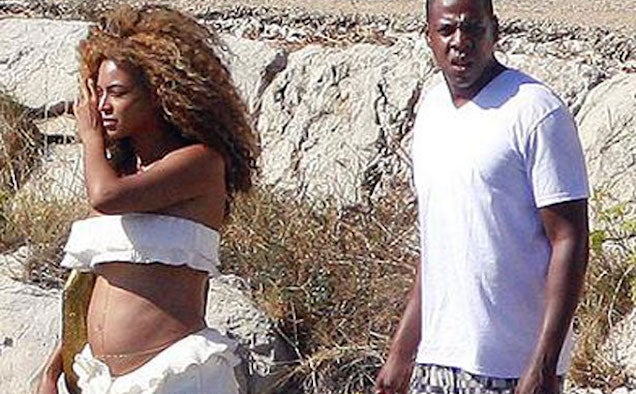
Even harder to explain were the physics on display at an interview with Australia's Sunday Night. In a bend seen round

Image via Mommyish.com
At this point, the conspiracy began picking up celebrity followers.
"I dont think she was pregnant. The deflated stomach thing. I watched the video and I don't know. She sat down and she looked up like 'Oh shit'," Tamar Braxton later said.
After conducting a test with two of her pregnant staffers, Wendy Williams concurred:
Now being a woman, I had my baby bump. Many of you have had baby bumps. I never remember [squatting]. Just take a look at the video. She's either giving birth to a frisbee, or Stewie from family guy. What is that, B? I was on bed rest the whole time, I'm not exactly sure. But I can tell you, when I would get out of the bed and sit up at a kitchen table, I wouldn't be able to sit like that. Like, I was so concerned about my back and the baby. Even at 5 months I sat like [stands up and leans back into the chair] this.
Even mommy bloggers jumped into the fray. Said one: "In my experience, pregnant women assume seats slowly and lean back as they ease into a chair to secure a good landing. Generally, they do not lean forward with their big bellies, straining their backs."
"It was fabric that folded—does fabric not fold? Oh my gosh, so stupid," explained Beyoncé.
Well, you may be thinking, surely someone saw her give birth? She didn't pop the kid out at home.
Maybe, but no one's talking!
According to reports, Bey and Jay paid $1.3 million to secure and redecorate the entire fourth floor NICU wing of Manhattan's Lenox Hill Hospital. On the alleged day of Blue Ivy's birth, January 7, 2012:
After 11 p.m., even doctors and nurses were barred from entering the fourth floor, prompting one doc to complain that he had patients to see.
In an effort to keep images from leaking to the public, hospital workers placed tape over security cameras and are forcing employees to turn in cell phones when they arrive for their shifts, a source said.
Several security guards were spotted patrolling the perimeter of the hospital Saturday night.
A Lenox Hill staffer confirmed that a patient named Ingrid Jackson [Bey's apparent pseudonym] was in a "labor room."
"I feel more beautiful than I've ever felt because I've given birth," Beyoncé later said of the experience. "I have never felt so connected, never felt like I had such a purpose on this earth."
So where are all the pictures of this pregnant woman? Wouldn't a woman planning on launching a maternity line photograph that bump as often as possible? Put short, Beyoncé's response to her changing body was... underwhelming. In fact, it took two years for her to release any private photos at all.
During her 2013 HBO special, Life is But a Dream, Beyoncé finally shared a series of blurry pregnancy photos and delivered a short message about the "rumors," which essentially denied nothing.
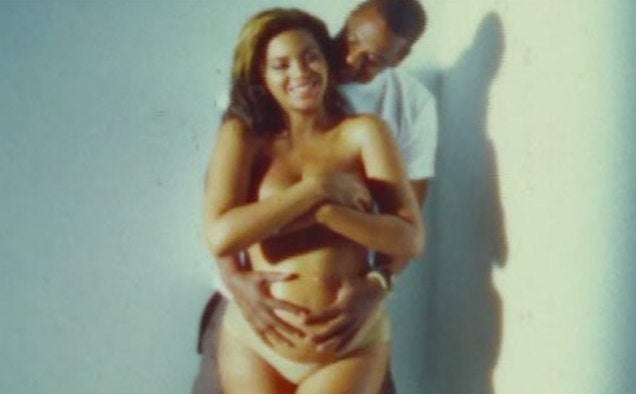
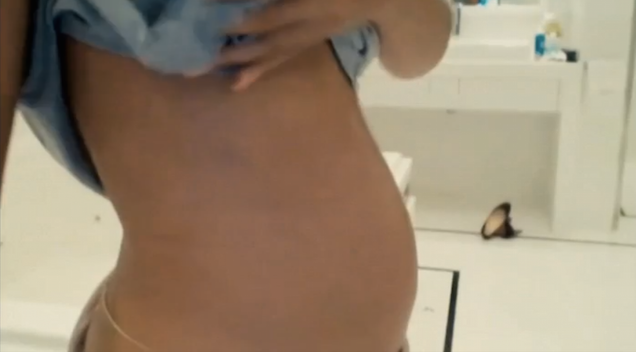
And while stylistically intriguing, none of the belly shots—seemingly included to prove Beyoncé was really pregnant at the time—look particularly difficult to fake.
"There's a stupid rumor," Beyoncé says of the surrogacy claims in the film, looking down and shaking her head.
It's actually the most ridiculous rumor I think I've ever had, about me. But there are actually a lot of people that believe this rumor and it's crazy. I guess there are some crazy celebrities in the world, so we get a bad rep, but...um...to think that I would be that vain. And I respect mothers and women so much and to be able to experience bringing a child into this world if you're lucky and fortunate enough to get the opportunity, people should have boundaries. There's certain things that you just shouldn't play around with, and a child, you don't play around with that.
A fine message, but one that doesn't deny the most popular Blue Ivy conspiracy theory: that a surrogate carried the babé. Why not explicitly put the rumors to rest? Beyoncé's statement, in essence, denies only that she would hire a surrogate out of vanity. The message seems irrelevant if say, fertility issues drove the surrogacy.
As Rich Juzwiak points out in his excellent analysis
Regardless, it makes sense that given the time examined, Beyoncé's movie would chronicle Beyoncé's pregnancy and the controversy it birthed. The problem with Life Is But a Dream's treatment of her pregnancy isn't that it protests too much – it protests too weirdly. We never see a full, clear shot of Beyoncé's pregnant, swanlike body. Instead it's presented in pieces, owing to the limitations of her Mac webcam. When her body is shown in full, it's in grainy, black and white footage in which her face is shadowed.
Why, though? If you're going to present an image of your pregnant self to prove the naysayers wrong, why do it in such an obscure way? Why bother? The footage seems to exist to be described as "beautiful." Is it just art, or more lies?
Since then, at least one woman has come forward to claim maternity of the child, though the Daily Mail reports she's also claimed to be the legal mother of North West, Prince George, and all three of Michael Jackson's kids.
But whoever birthed Blue Ivy, one thing's for sure: that kid is definitely Jay's.
Blue Ivy looks like she came outta Jay Z pic.twitter.com/8e6xZ9cg4j
— Jama (@MadeManJama) October 11, 2014
This is Illuminati Month on Black Bag, in which Gawker locks itself in the woodshed and breaks out the red yarn to explore its favorite conspiracy theories. Contact the author at gabrielle@gawker.com









